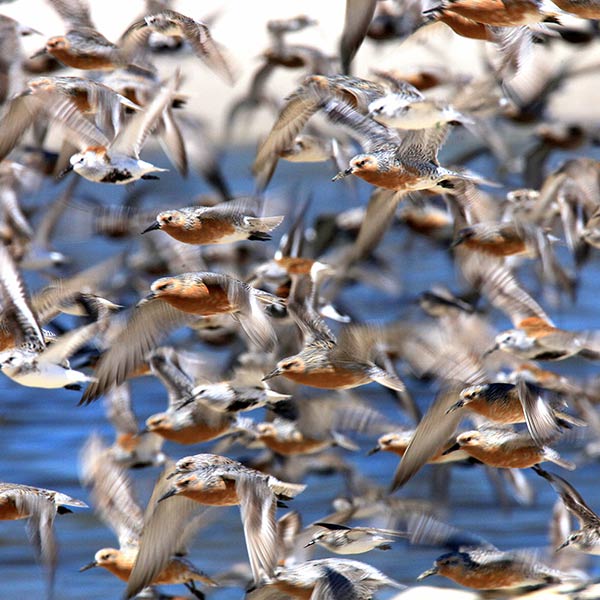Subtotal: $
Checkout-

Can Anything Good Come from Climate Change?
-

Jesus Is Coming – Plant a Tree!
-

Our Garden, God’s Garden
-

Becoming a Rooted Church
-

A Gospel of the Ground
-

Sacred Seeds
-

Firewood
-

Insights on Creation
-

Conservation Is for Conservatives
-

Where Rivers Meet the Sea
-

The Psalmic Soundtrack of John Muir
-

John Muir’s Gloria in Excelsis
-

Nature and Revelation
-

Digging Deeper: Issue 4
-

The White Lily
-

Hitler’s Nemesis
-

Growing into Manhood
-

Why We Need Stories Like Homage to a Broken Man
-

Editors’ Picks Issue 4
-

Meeting Mary
-

Johnny Appleseed
-

Readers Respond: Spring 2015
-

Report from Rome
-

Together On Marriage

Next Article:
Explore Other Articles:
It was an early spring morning in rural New York. The white blossoms of shadbush graced the hillsides, and underfoot a carpet of green moss contrasted with slender red columbine. But what most caught my attention was a tumble of vigorous notes. The drab olive singer, when I finally located it, seemed impossibly small for such a robust song. With mounting excitement, I studied its field marks, consulted my Peterson’s Field Guide, and identified it as a ruby-crowned kinglet, the “spark bird” that altered my life forever.
A spark bird can be of any species. Simply defined, it’s the bird that sets alight a lasting love for all things avian. Birders will relate every detail of their spark bird story to anyone who innocently crosses their path. There is no stopping them; just ask my wife.
The writer John Leo once defined birding as “dynamic, addictive, and highly contagious behavior combining hunting skills, aesthetic delight, intellectual analysis, and the dreamy withdrawal from normal life, especially during spring migration.… There’s an awful lot of adventure in it. It allows grownups to do things they thought they had put behind them when they grew up, like sloshing around in the mud and getting up in the middle of the night and going out looking for things.”
I readily admit to all this, and treasure every adventure along the way. An undoubted high point involved taking a team of eleven-year-olds to the World Series of Birding competition and fundraiser in May 1993. For nineteen hours we crisscrossed Cape May County, New Jersey, logging one hundred and fifteen species. I will never forget the sight of some three thousand red knots feeding on horseshoe crab eggs, stocking up on protein before embarking on the last leg of their nine-thousand-mile journey from the southern tip of South America to their breeding grounds in the Arctic. We were awed spectators of this timeless drama, now threatened by the precipitous decline of this shorebird’s North American population.
That day led to invitations to offer workshops on environmental education. In one of these, I described how adults can foster children’s environmental awareness, shaping it into appreciation for the intricacy and fragility of the web of life. Add the involvement of schools or civic groups, and appreciation leads to action. Birding draws participants into a range of habitats, providing a remarkably visible interface with the natural world; this “Triple A” framework transforms something fun and exciting into an effective tool for educating children about the environment.(footnote)
A workshop participant from Beijing, radio journalist and environmental leader Wang Yongchen, related her own spark bird story. She told of a boy in rural China who killed an owl and triumphantly brought the dead bird to school. His teacher explained to the boy how owls benefit his village by reducing rodent damage to crops. The lesson stuck: when the child grew up and became principal of a primary school, he initiated weekly bird study classes, helped the children build nesting boxes, and set up a primitive rehabilitation hospital for injured birds. The local avian population slowly recovered from near destruction deliberately set in motion by the misguided policies of China’s Communist government under Mao Zedong. And as nature’s balance was restored, the villagers reported that crop yields increased.(footnote)
When Yongchen visited the school, she heard bird song, notably absent elsewhere across rural China. Her subsequent radio broadcast generated a flood of letters, raising environmental awareness and advocacy throughout China. Awareness, appreciation, action.
Raising environmental consciousness does not require deep knowledge. Rather, I invite parents, educators, and mentors to join the children in the high drama of discovery, as child and adult identify a plant, bird, or insect and learn about its unique place within the web of life.
Seven years ago, a group of home-schooled children that I mentor in New South Wales, Australia, envisioned a “nature paddock” in which an array of newly planted flora would attract a diverse range of fauna. Adults smiled, looking at the vacant lot; undaunted, the children raised funds, then bought and planted trees and shrubs.
Year by year, the children’s vision is becoming reality – far more successfully than we had hoped. Today, native birds and other creatures that had abandoned the area have returned, to the delight of the children, who meticulously record each arrival with detailed notes, sketches, and paintings. Once the tinder has been ignited, the range and scope of action are limitless, no matter how tiny the initial spark.
 Mixed migration: red knots, dunlins, and ruddy turnstones. Photograph by Bill Dalton.
Mixed migration: red knots, dunlins, and ruddy turnstones. Photograph by Bill Dalton.
Footnotes
- “Bills and Feathers,” 1994 Nature Educator of the Year – Runner up, in Teaching Nature: Ideas that Work!, The Roger Tory Peterson Institute of Natural History.
- Bill Wiser, “Global Thought, Local Action,” A Bird’s-Eye View, Vol. 4, No. 4 (November 1996), American Birding Association.
Already a subscriber? Sign in
Try 3 months of unlimited access. Start your FREE TRIAL today. Cancel anytime.



































Stephen Hodgson
With so many people now owning smart phones I can never understand why many people rather than sending pictures of cats around the world don't use their phones to help them identify things in nature and record all they see.
TL O'Dell
This is a lovely brief article acknowledging the mysterious source of a "spark". How birds often carrying away our imagination on the wings of their weightless limitations (Poetry from Muttered the Muse).